Whatcha Playing: April 2019
RPGamer’s recurring feature providing a look at what the staff is playing outside of games for review is back. This month, lots of the staff are taking on Nelke and the Legendary Alchemists with mixed results. Chocobo Mystery Dungeon, Zanki Zero, and even the new Mortal Kombat are also vying for the staff’s gaming time.
With that introduction out of the way, whatcha playing?
Anna Marie Privitere
Nelke and the Legendary Alchemists
Nelke & the Legendary Alchemists: Ateliers of the New World is a real mouthful, but the title is par for the course in the long-running Atelier series. What sets this entry apart is its completely different gameplay from the rest of the games. Atelier games typically revolve around two major gameplay aspects: going out to gather and explore, then coming back to the titular atelier to alchemize up all sorts of goodies.
Nelke isn’t an alchemist; instead, she’s a town administrator of a tiny village where a mystical tree is said to grow. This tree is sucking up countless alchemists from other times and places, depositing them in Nelke’s orbit. These characters come from all 20 years of past Atelier games, all the way back to Marie & Elie through to the most recent Mysterious trilogy releases. While the game retains all the classic gameplay of the Atelier series, it does so with twists and turns that may or may not resonate with fans of the series.
Each week is divided into two distinct time periods: the Holiday time, where Nelke takes up social aspects including conversations to increase friendship levels with those who’ve come to this time and place, takes on quests, discovers landmark constructions suggested by the various characters, and explores. There’s just one catch: Nelke only has twelve time slices to commit to her Holiday time, and interactions take up 2 each. If you want to explore, you can dash through a zone in about six time slices, but making interactions cost less would have markedly improved the game’s flow.
The other half of the week is a Weekday period, where Nelke focuses exclusively on her town management. Building new facilities or decorations, expanding the town’s land, and ensuring everyone has a job to do — be it synthesizing new alchemy items, selling those goods, harvesting basic plants and materials, or sending off explorers to grab anything you can’t gather within the town.
Though it took me a couple tries to finish Nelke’s story, I admit the “just one more turn” gameplay was pretty addictive, but throughout the 100-turn adventure, it mostly created a keen interest in playing the Atelier games I missed and replaying my favourite games from the Arland and Dusk trilogies. I’m still a little perplexed whether I should even recommend it to Atelier fans.
Peter Thomas
Chocobo Mystery Dungeon: Every Buddy!
As I continue to struggle through my inability to play through a game completely, I have still not beaten Skyward Sword, which I spoke about last month. That’s okay, though, because it has made room for something completely new to me: Chocobo Mystery Dungeon: Every Buddy!
I don’t know why, but I’ve missed every single iteration of this game prior to this release for some reason or another. The PlayStation version came long before I ever owned a PlayStation, and I never ended up getting the Wii or DS games because I’m a terrible person, probably. Being that this was a digital release on what has easily become my favorite console this past year, this was a no brainer.
I’m a sucker for any of the Final Fantasy games that have a job system, and throwing that onto a chocobo who only says “Kweh!” in various forms made me squee in delight. From the moment this game is powered on, you already know the level of cute you’re in for, and the game delivers. This can be deceptive, though! Despite the adorable levels of “kweh!” you will receive, do not be fooled by the fact that this is still a roguelike dungeon crawler, and with it come some harsh difficulty, a bit of necessary grinding, and penalties for dying in the dungeons.
Still, as I make my way through the second half of the game, I am enamored by the design of both the game as a whole and its artistic approach, from the creatures you encounter to the look and feel of each class. Plus, it’s always been a bucket list item of mine to play through an entire Final Fantasy game with Shiva, and this is probably as close as I’m going to get. Did I mention her movement looks like she’s ice skating around? CUTE OVERLOAD.
I still can’t for the life of me understand why Chocobo is limited in his speech, yet Volg seems to have mastered the language just fine. Apparently I need to spend more time in the Scholar job.
Sam Wachter
Nelke and the Legendary Alchemists
April has been a whirlwind of a month for me. I got a new full-time job (which I haven’t even started yet), spent a lot of time reminiscing about Phantasy Star, and when I do have free time it’s been spent playing a lot of Nelke & the Legendary Alchemists: Ateliers of the New World for review. I’m a bit ashamed that I haven’t completed this yet, but life won over and I’m nearly done.
In fact, I’m on the final task of the game and trying to grind my way to around level 55 for the endgame. After talking to Anna Marie, I realized I might be super underleveled, but I have thirty days to get my characters sorted before they take on a big baddie. In our discussion we also talked about how the combat system is a snoozefest of awful and it makes players severely unmotivated to participate in combat. It’s just not fun in the slightest, as it’s slow, repetitive, and completely uninspired. It’s a shame given that the town building component is so strong, fairly well thought out, and actually additive. It’s so much fun to set all your townspeople up with their tasks and see what they create or sell. It’s also exciting (or dreadful) to see how much money you’ve made or if you’ve managed to bottleneck yourself with certain storefronts.
It’s an impressive feat what a disaster Nelke is. Gust has made some fantastic combat systems in the Atelier series (I’m looking at you, Dusk subseries), but Nelke‘s is such an afterthought that it’s downright unmotivating for players. When you get a holiday in the game it’s far more fun and useful to talk to the other characters to gain new relationships and recipes, and while combat is the main way to get resources, why should a player waste their time on garbage combat? This game has the problem that one part of it is fabulous, but the other part is a dumpster fire where the developers are clearly twiddling their thumbs and saying, “This is fine.”
On the odd plus side, playing this game makes we want to give Atelier Lydie and Suelle another try, given I didn’t get very far in it. But there are so many games in my backlog and with Judgment on the horizon, there’s better things to be checking out.
I’ve also been playing Final Fantasy X! You know, that game I challenged myself to finish last year and didn’t? Yeah! Still playing that. I finally beat stupid Seymour Flux and am now in the Gagazet Mountain Cave. It’s weird but when I am playing FFX I get very into it, but the moment I put it aside, I completely forget it. Ah well, Auron is still cool. I like him.
Oh, and you know, there’s a new Overwatch event so there goes me completing any games this month. Perhaps May will be better!
You can check out the rest of Sam’s thoughts on Nelke in her review.
Matt Masem
Hyperdimension Neptunia U and a host of other games
April has brought on so many games, it’s kind of ridiculous. This month my kids finally convinced me to buy a Switch, so on the non-RPG front I’ve been playing a ton of Super Smash Brothers Ultimate as well as family-favorites Mario Kart 8 Deluxe and Super Mario Party. All of these are totally worth the hype and great for all of those RPGamers out there looking to spend some quality gaming time with the family. It has been a long time since my wife and I sat down to game together, and it’s great now to play together with the littler versions of ourselves as well.
The first RPG I started and completed on my Switch was a game that I reviewed this week: SteamWorld Quest. To summarize my review, the game is downright amazing. I’d never played a SteamWorld game before, but after this gem, developers Image & Form have my full attention. The game is your standard turn-based affair, but instead of learning skills and spells, you collect and play cards to perform attacks. The battle system is easy to learn yet deep and customizable. The game is stunningly beautiful and the characters each undergo their own relatable, fascinating personal journeys in a humorous robotic steampunk fantasy world. I adored it and have been singing the praises of this game since I’ve played it. I laughed, I cried, I played through a ton of the arena battles because I just couldn’t get enough of the battle system!
To keep up with RPG Backtrack’s promise to have a Compile Heart/Idea Factory podcast soon, I’ve played a couple of Hyperdimension Neptunia games this month. The first I tried was Hyperdimension Neptunia Re;Birth3: V Generation. While I enjoyed the turn-based combat and the story was comprehensible, after ten hours I kept getting lost in what to do next. After consulting a couple of FAQs, I set it aside for a second game, Hyperdimension Neptunia U: Action Unleashed. This game was far more fun. The gameplay was similar to Musou games with dozens to hundreds of enemies on the battlefield and crazy combos and millions of damage being dished out by increasingly scantily clad Neptunia and friends. Action Unleashed clearly told me from the beginning that the story was non-canon and just for actiony fun. Well, I didn’t really encounter a story, but I did have a great deal of fun with this, finishing the game off in a dozen or so hours.
Not wanting to expose (pun intended) my students to Nep Nep’s nip slips, I downloaded Kingdom Item Shop from the Nintendo eShop to play on an extremely long bus ride to a field trip. While somewhat similar to Atelier games or even the Marenian Tavern Story: Patty and the Hungry God, which I reviewed earlier this year, it has quite the basic gameplay loop with extremely limited party members and dungeons. The cooking, crafting, and alchemy recipe lists were extensive, but an inconsistent localization meant hints about specific ingredients didn’t always match the names or descriptions of the ingredients themselves, leading me back to FAQs to finish off this game in under eight hours. It was fun for what it was and I don’t regret dropping $3 on this game.
Finally, I booted up Vaporum on my PS4 this month and tried out this port of the grid-based dungeon crawler. Unfortunately, after a half-dozen hours or so I found myself making no substantial progress in the game and ended up waving the white flag. Even with the brightness on my TV turned to maximum, I had a difficult time seeing where I was going, leading to multiple deaths and game overs from falls that ruined 30 minutes or more of progress on more than a few occasions. The battles were uninspiring affairs, and the lack of enemy variety was rather disappointing as the game seemed to have a good mysterious plot to follow and decent voice acting. General interaction was an issue too as this game was originally a PC title, and the PS4 controller just couldn’t easily handle everything. I had a hard time getting into Vaporum (literally, I needed an FAQ on the first room) and after dozens of game overs, I simply let the game be over for me.
Cassandra Ramos
I was slow to start playing Pokémon: Let’s Go, Pikachu!, just as I was to begin prior remakes in the series. I hadn’t even bought the game until a little before I finished Mario & Luigi: Dream Team. I still find it strange that the Pokémon: Let’s Go games are the second remakes of the first generation, although they are based more on Yellow Version rather than Red & Blue. I’ve never played Yellow, so content exclusive to it, like Jessie and James from the anime showing up, are new to me. There are other things new to the game, and it’s not just the fancy graphics. Though I must say, they are quite nice looking. The landscape actually looks like what it’s supposed to, particularly the ledges. On the original Game Boy, the ledges looked like strange fences on the ground. Even the GBA remakes didn’t do enough to dispel this oddity, at least in my opinion.
Anyway, I was hoping to finish the game by the time I wrote this. Instead, I just recently defeated Koga, the Fuchsia City Gym Leader and I am about to head to the Seafoam Islands and Cinnabar Island from there. I have once again recreated my old Red team. I didn’t have to, and I replayed through the original Red Version many times creating different teams, but I have a strong, nostalgic compulsion to rebuild this team over the course of this game, albeit with different names. Delthea is my partner Pikachu, who is not only the cover mascot, but is also absurdly powerful and capable of learning attacks it normally can’t in the main series (with goofy names to boot). The rest of my current team consists of Anne the Butterfree, Rei the Charizard, Lelouch the Nidoking, Dal Ra Lie the Gyarados, and Agnés the Pidgeot. Eventually, Anne and Agnés will be swapped with an Articuno and Mewtwo, though I’m still deciding on what names to give them.
Pokémon: Let’s Go is a curious mixture of the old and the new, and some mechanics that will likely never make it into the mainline series. Probably the oddest thing that stuck out to me was the lack of Pokémon abilities. They have been a staple of the series since the third generation. It makes some sense now that I think about it; the mobile game Pokémon Go lacks abilities and Let’s Go is not only heavily based on Go, but Pokémon can also be transferred from the mobile game to the Switch one. While I play the mobile game extensively, it still felt odd to have to capture Pokémon just by chucking Pokéballs at them. There are a few double battles. Blue is a separate character from your rival and he apparently didn’t go on his journey with a Pokédex but just jotted things down on a map. Your Pokémon follow you around and you can ride some of them. I could ramble on about all sorts of odds and ends concerning this game, but suffice it to say, it’s keeping my interest. I was a tad hesitant when I first heard about this game, but I am glad there’s enough different for a veteran Pokémon fan to enjoy.
Other than Let’s Go Pikachu!, I also finally started playing Super Paper Mario for the Wii and have made it partway through chapter 2. The premise of the story is … maybe not darker, but perhaps more grandiose than Mario games tend to be, with the main villain Count Bleck wanting to destroy the multiverse. Way to be ambitious there, Bleck. The interdimensional town of Flipside is strange yet fascinating, as are the worlds Mario and party have visited so far. The platforming hasn’t been difficult and I enjoy using the flipping mechanic to switch from 2D to 3D to solve puzzles and uncover secrets. Thus far, Super Paper Mario has much of the charm of its predecessor Paper Mario: The Thousand Year Door, including the jokes, goofy characters, clever writing, and punny names. I’m not sure how often I’ll be able to play it, but I look forward to more.
Kelley Ryan
I have a confession to make. I was a huge fan of the TV show Lost when it was on almost ten years ago. The intrigue of different types of characters having to survive on an island with supernatural elements and an overarching mystery to solve was my jam. So when the premise of Spike Chunsoft’s Zanki Zero came to light, I knew I had to check it out.
You play as a group of eight characters trapped on an island after the world has presumably ended. The catch is that each of your eight characters is a clone that can only live thirteen days. The game is set up like a first-person dungeon-crawler where all of your actions and the monsters’ actions are in real time.
I have been having a lot of fun with the game so far. The story has me glued to my screen, as each dungeon focuses on the past of one of the eight characters in your party. You watch their past unfold on VHS tapes you find in each dungeon. The flashbacks in Lost were my favorite part of that series, so I find myself saying, “I need to find the next tape!” more often than not. I have actually been amazed at the darkness of some of the backstories, exploring mature themes like incest, abuse, and the ethics of human research. I am only on the fourth dungeon right now, so I still have a lot to explore.
The game hasn’t been without its rage-inducing moments though. I keep forgetting that you can’t actually pause the action while looking through your inventory, causing multiple cheap deaths. What is worse is that inventory management is a chore. Whenever a character dies, everything in their inventory drops. Trying to make it back to your base with half of your characters alive and over-encumbered can be a huge pain. I am playing the game on the second-easiest of the five difficulty levels. I figured I could drop it down to the easiest if the combat mechanics got too rough.
Zanki Zero has its hooks in me with its dark, unsettling story. I want to see this game through to the end. I just hope that, unlike Lost, the game will do a better job of providing answers.
Joshua Carpenter
Nelke and the Legendary Alchemists
I’ve been in a bit of a gaming funk lately. A combination of stress at home and work has left me lacking the mental capacity to handle much of a narrative experience at the end of a long day. Into my funk enters Nelke and the Legendary Alchemists, a spinoff title of one of my favorite series. Melding Atelier with some city building seemed like it would be right up my alley and might just be the cure for my gaming malaise. However, after putting in a bunch of hours, I’m not sure that it’s good or something that I would recommend, but it has meshed with my mellow mood.
I grew up pouring tons of hours into Sim City and games of that ilk so the town management aspects of Nelke are right up my alley. This is probably the most simplistic town building game I’ve played. Players build farms to make raw items to use in the ateliers to make high-value items to sell in shops. The town building aspect takes a back seat to this management sim and taking care of supply lines and making sure that the ateliers can make items and keep the money rolling in. While the town building is going on, overall tasks start coming in — like raising the population of the town or constructing certain buildings — to keep things moving forward.
In terms of story, though, the game is relying on nostalgia for the old characters that show up to keep players engaged. This has worked perfectly for me lately, getting a small dopamine hit from seeing a character I fondly remember, but no deep story that requires much of my attention. The combat is honestly pretty terrible; it’s barebones with simple options to attack or use items and the alchemists aren’t even available to control. For a series that has had some great and interesting combat systems, it’s a shame that I’m turning the combat to auto and ignoring it, but I guess that lack of engagement has fit in with my funk.
So I don’t know how I feel about Nelke. It’s been a meh experience that I can sink some hours into with the TV on in the background. Something I don’t have to invest in mentally or emotionally and it may not be the best game, but it’s been the right game at the right time. If you fall in the middle of the Venn diagram between city building, simulation, and Atelier fan, Gust has made a game for you. I’m just not sure how many people fall into that particular category.
Pascal Tekaia
Cuphead
This month, for me, was highlighted by the Switch release of Cuphead. This game, previously an Xbox One exclusive, is one of the only games I’ve honestly felt I’ve missed out on by not being an owner of Microsoft’s console. So I’ve been eagerly awaiting news of a release on a different platform, and was more than excited when it was finally confirmed for the Switch. A week-and-a-half and two-hundred-some-odd deaths later, and I’ve neatly cleared out all bosses and other stages in Worlds 1 and 2. The game is as hard as they say, but the art style and gameplay make it impossible to put down, and I for one would be very interested to see where the devs are going next.
Having finished 428: Shibuya Scramble recently, I’ve also picked up a new visual novel to occupy my time with on the Switch. Will is a quirky game in which players take on the role of an amnesiac god, tasked with helping humans who pray for assistance. All of this is done via written letters and notes, and players have to rearrange passages of the letters in order to reach a different outcome for the human. I’ve just gotten to the point where stories from multiple humans begin intertwining, requiring you to change two peoples’ stories simultaneously in a way that gives both of them the best possible outcome. I’m only a few prayers in, but the stories so far are well written, and I get the feeling there will be plenty of heartstring-tugging down the road.
Finally, I spent some time this month playing through a newly-released point-and-click adventure game. Whispers of a Machine is a collaboration by the creators of Kathy Rain and The Samaritan Paradox, so there’s plenty of goodness to be expected. Playing as a nanotech-augmented federal agent, the player is sent to a rural outpost in order to solve a string of brutal murders. All of this is set in a dystopian future that’s shied away from most technological advances after a near-uprising of sentient A.I. Players are given augmented abilities to aid in their investigation, such as super strength and a scan-vision mode. The best part of the game is that choices made in interacting with others shape protagonist Vera’s personality in three distinct directions, and those choices in turn unlock new abilities as the investigation carries on; in other words, replaying the game differently will unlock new potential abilities, meaning that puzzles can then also be solved in new ways. It’s a very well thought-out and satisfying adventure experience that many genre fans will be sure to enjoy.
Joe Hanley
Mortal Kombat 11
Mortal Kombat 11 shows that the legendary fighting game franchise has come a long way over the past twenty-seven years. The series still has new tricks up its sleeve, but still has room to grow as well. Gameplay is as fast and fun as ever, though this entry does feel more difficult (I’m now struggling on medium) and combo timing feels stricter. Fortunately, the robust tutorial mode can help get newcomers up to speed and teach the new mechanics to veterans. I personally think that the Fatal Blows are an excellent replacement to X-Ray moves, and the new custom loadout system provides a greater deal of control than the variations of MKX. The story is convoluted yet entertaining, and it’s refreshing to see so much single-player content while other series in the genre have pushed for more focus on multiplayer.
MK9 was a retelling of the events of the first three games with slight differences and a dark ending in which several characters die. MKX took place twenty-five years later with a focus on a new generation of warriors, which includes Cassie Cage, the daughter of Sonya and Johnny, and Jacqui Briggs, the daughter of Jax. The story ends with Shinnok and Quan Chi finally being thwarted, but Raiden becomes an evil tyrant and several characters, like Liu Kang and Kitana, are still revenants, which are corrupted resurrections created by Quan Chi’s dark magic.
MK11 takes place sometime later with a new villain named Kronika trying to undo the events of the past two games, which results in multiple characters entering the future and some even coming back to life. The time manipulation and alternate universe shenanigans require a somewhat greater suspension of disbelief than Back to the Future or Terminator, but still make more sense than Inception or Interstellar. There are hilarious interactions between a grizzled old Johnny Cage and his arrogant younger self, and an epic showdown featuring pre-death Liu Kang and Kung Lao facing off against their future revenant selves. What’s disappointing about the story is that it doesn’t progress the overall plot that much. As of this writing, I am halfway through it.
Note: it’s Mortal Kombat so the trailer includes graphic violence.
Despite the illogical nature of time travel, it represents a creative way to incorporate characters from both MK9 and MKX. Twenty-five characters at launch (one DLC, one unlocked through play) is very impressive. The original seven characters are here with interesting updates. Fan favorites from MK9 who were missing from MKX, like Jade, Kabal, Noob Saibot, and Skarlet, make their return. Several characters introduced in MKX, like Cassie, D’Vorah, Erron Black, and Kotal are back. Four brand new characters have also been introduced, three of which are playable. It seems odd that we are only now finding out about Shinnok’s mother (Kronika) and siblings (Cetrion and Geras), but their presence doesn’t hurt the continuity. Glaring omissions, like Ermac, Reptile, and Smoke, could possibly be rectified in future DLC updates. Shang Tsung has already been announced as DLC.
Where the game stumbles is the unlockable content. The Krypt makes its return, with a third-person view this time, but the boxes are now randomized and there are three different currencies. On the plus side, there are THOUSANDS of collectibles. On the downside, the vast majority of them are random drops, so getting stuff you actually want is nearly impossible. One box I opened required two hundred and fifty hearts, predominantly obtained by performing fatalities and brutalities, and it contained several items for Jax, who I never use. The company claimed there would be no loot boxes, but that is only half true. The Krypt is full of them; they just don’t cost real money.
If this were a title that RPGamer covers and I were to actually review it, I could easily give it 4/5. The mobile-inspired loot system is annoying, but it’s mostly frivolous cosmetics. The game is well designed and bug-free. Graphics are amazing and frame rate is fast and stable. There are plenty of characters and modes to keep players occupied for a very long time. Now I just need my friends to “Get Over Here!” and play it with me.
Michael Apps
I’ve mostly been playing hero shooters as some comfort food during a difficult month, but as far as RPGs go, I recently picked up the Dragon’s Dogma port for the Switch. A solid port with no noticeable issues, it’s the first time I’ve really tried to dig into the game as on previous releases I kept getting distracted by other games. The story seems largely unremarkable, but the combat is as solid as you would expect from Capcom. The AI companions, called pawns, are a great addition, and the monsters are a blast to fight. I’m not too far in, but looking forward to digging deeper into the game.
The Wheels Digital TCG Report
The only major meta change to a digital card game this month occurred in Hearthstone where a new set, and the yearly standard rotation, occurred. A new set did just launch in Magic Arena, but it’s too early to tell its effect on the meta. Hearthstone’s new meta, free of degenerative odd decks, is varied and fine, with a good mix of control and aggro variants. For those interested in trying some of the new meta decks, I recommend looking at temp rogue and big shaman. The yearly standard rotation is the best time to check out the game for the first time, or to get back into it.
That’s all for this edition of Whatcha Playing. Please join the discussion in the comments about the staff’s selections and what games you’re currently playing.
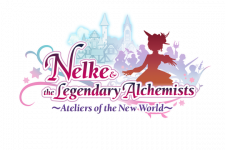






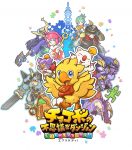





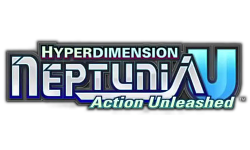
























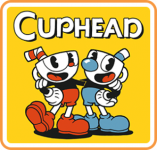



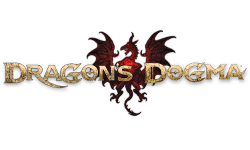









Recent Comments